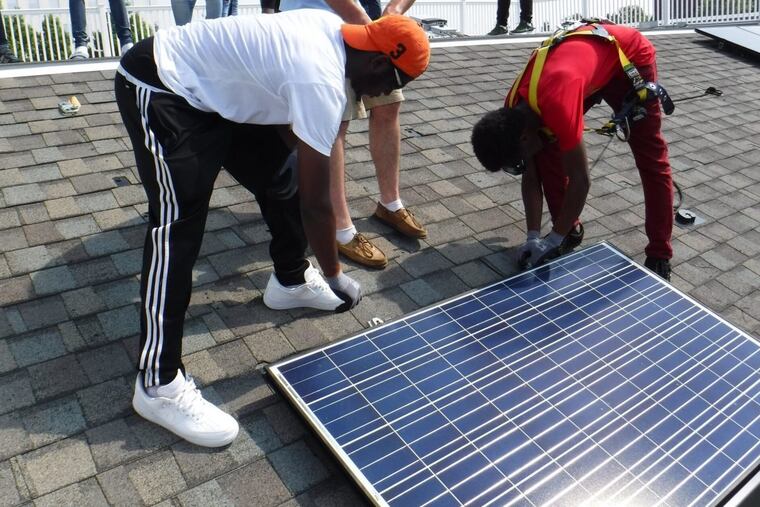Can Philly make many of its 600,000 buildings more energy efficient?
On Tuesday, the city's Office of Sustainability laid out its Clean Energy Vision strategy to get residents and industry to buy into its goal of sharply reducing carbon dioxide - and continue on a path to meet criteria of the Paris agreement, regardless of the Trump administration's withdrawl of the global plan to reduce greenhouse gas emissions.

Philadelphia counts 600,000 buildings, including homes and businesses, within its borders and many of them are aging and drafty — which means they're using more carbon-generating energy than they may really need.
On Tuesday, the city's Office of Sustainability laid out its Clean Energy Vision strategy to get residents and business owners to voluntarily become more energy efficient and reduce the amount of electricity they pull from the grid, cutting the city's overall carbon emissions.
This plan would help the city meet the criteria of the Paris agreement, though the Trump administration withdrew from the global accord to reduce greenhouse gas emissions.
"We're really focused today on the built environment and I think that's important to note," said Christine Knapp, director of the Office of Sustainability.
Knapp said the city reduced emissions of carbon dioxide — the chief greenhouse gas — by 15 percent between 2006 and 2014. However, the city has a much more ambitious goal: reducing the 2006 levels by 80 percent by 2050. The city has already laid out a plan for trimming municipal energy use, which now costs the city $64 million a year in electricity for its buildings.
The city is accepting public comment on the plan, which won't be finalized until January.
It's expected that the bulk of energy savings will come from how the city pulls electricity from the regional grid operated by PJM, a regional transmission organization. About 40 percent of carbon emissions attributable to buildings comes from fossil-fuel generated electricity. Philadelphia is seeking a partnership with a renewable energy provider that would supply electric power through solar or wind.
But city officials are also calling on residents to help since residential neighborhoods make up the bulk of Philadelphia. As part of the effort, the office of sustainability is launching a survey asking residents to evaluate its work and share how they might participate in achieving the goals.
"People are really excited that we're doing this work and there are a lot of Philadelphians that really want to be a part of this process," said Rich Freeh, a senior manager with the Office of Sustainability.
The city already has a program, Solarize Philly, in place to help residents install rooftop solar panels. Officials say more than 2,100 residents have expressed interest, and 186 have signed solar installation agreements. The goal is to sign up 500 residents by next year. About 80 percent of Philadelphia's rooftop space is suitable to generate solar. However, even if half of that space were devoted to solar, the city's needs would not be met.
The EPA estimates that up to 30 percent of energy in the city's buildings is wasted.
So officials urge residents to weatherize their homes by installing programmable thermostats, replacing dirty air filters, sealing windows, using high efficiency light bulbs, and planting trees that provide shade in the summer. Residents should also consider geothermal energy.
Updated energy codes for residential and commercial structures would also go a long way toward cutting carbon use. The city says it can offer developers who prioritize energy efficiency a streamlined permitting process, higher building density than normal, and tax incentives.
"We're recognizing that Philadelphia needs to lead to reduce our carbon footprint when there's a state of inaction at the federal government," Freeh said.